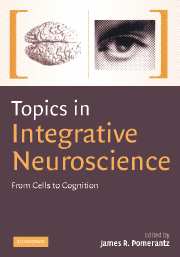Book contents
- Frontmatter
- Contents
- List of contributors
- Preface
- Overview of neuroscience, choice and responsibility
- 1 Neuroscience, choice and responsibility
- PART I HIGHER ORDER PERCEPTION
- Overview of higher order visual perception
- 2 Attention as an organ system
- 3 Cortical dynamics and visual perception
- 4 Cortical mechanisms of visuospatial attention in humans and monkeys
- PART II LANGUAGE
- PART III MEMORY SYSTEMS
- PART IV SENSORY PROCESSES
- Index
- Plate section
- References
3 - Cortical dynamics and visual perception
Published online by Cambridge University Press: 08 August 2009
- Frontmatter
- Contents
- List of contributors
- Preface
- Overview of neuroscience, choice and responsibility
- 1 Neuroscience, choice and responsibility
- PART I HIGHER ORDER PERCEPTION
- Overview of higher order visual perception
- 2 Attention as an organ system
- 3 Cortical dynamics and visual perception
- 4 Cortical mechanisms of visuospatial attention in humans and monkeys
- PART II LANGUAGE
- PART III MEMORY SYSTEMS
- PART IV SENSORY PROCESSES
- Index
- Plate section
- References
Summary
Introduction
The primary visual cortex is the first cortical stage at which the visual world is analyzed. It has classically been thought to be a passive filter, only deriving information about local contrast and orientation, and passing that on to later cortical stages for the more complex task of object recognition. But a very different view is now emerging, showing that V1 plays a central role in much more complex processes involving intermediate level vision, integrating contours and parsing the visual world into surfaces belonging to objects and their backgrounds. The higher order properties of cortical neurons are reflected in the dependence of their responses on the context within which features of the visual stimulus are embedded. In addition, the properties of neurons in V1 reflect an ongoing process of experience-dependent modification, known as “perceptual learning.” This process begins early in life, incorporating the structural properties of the visual world into the functional properties of neurons. It continues throughout adulthood, encoding information about different shapes with which individuals become familiarized. Superimposed upon the influence of context and experience is a powerful top-down modification of neuronal function, such that the properties exhibited by neurons change according to attentional state, expectation, and perceptual task.
The receptive field and cortical circuitry: contextual influences
The central functional element of sensory systems is the receptive field, the portion of the sensory surface (retina) or environment (visual field) within which a stimulus will cause a cell to fire.
- Type
- Chapter
- Information
- Topics in Integrative NeuroscienceFrom Cells to Cognition, pp. 62 - 76Publisher: Cambridge University PressPrint publication year: 2008

